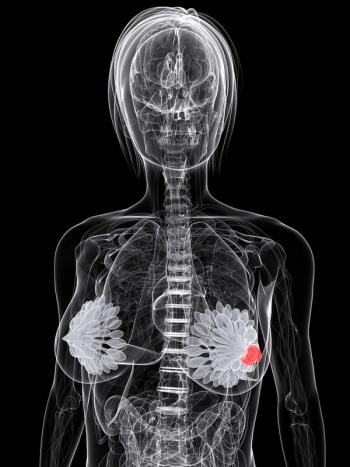
Oncology NEWS International
- Oncology NEWS International Vol 10 No 12
- Volume 10
- Issue 12
PET Imaging Effective for Managing Pediatric Cancer Patients
TORONTO, Canada-Positron emission tomography (PET) proved superior to both CT and MRI for both diagnosis and therapeutic monitoring of pediatric cancer patients in a study conducted at the University of Munich. Ute Porn, Jr., MD, described the results at the 48th Annual Meeting of the Society of Nuclear Medicine (abstract 144).
TORONTO, CanadaPositron emission tomography (PET) proved superior to both CT and MRI for both diagnosis and therapeutic monitoring of pediatric cancer patients in a study conducted at the University of Munich. Ute Porn, Jr., MD, described the results at the 48th Annual Meeting of the Society of Nuclear Medicine (abstract 144).
PET assesses the rate of cellular metabolism in tumors by determining the rate of uptake of radiolabeled fluorodeoxyglucose (FDG), an analog of glucose. In PET scans, cancerous tumors show up more brightly than noncancerous tissues. This selectivity, indicative of a higher rate of glucose usage, reflects the fact that cancer cells usually have a higher metabolic rate than nonmalignant cells.
Dr. Porn and her colleagues examined a total of 63 PET scans in 42 children, aged 1 to 17, with known or suspected tumors. Diagnoses from the imaging techniques were then confirmed by histopathology, clinical follow-up, or both.
While all the patients had cancer at some point, in this study some were investigated after chemotherapy/radiotherapy and/or surgery, so that in many instances no recurrent tumor would have been expected.
Overall, PET proved equal to or better than the other imaging techniques in both sensitivity and specificity, and was especially superior in specificity, ie, in avoiding diagnoses of cancer where none was present.
Moreover, in discussing the results, Dr. Porn indicated that PET was also better than CT or MRI in delineating scar tissue from residual tumors, and showed good correlation between post-therapeutic radioactive uptake and response of the tumor to treatment.
The one false-positive PET reading reflected enhanced FDG uptake by muscle, a tissue known to be highly active metabolically, while the false-negative readings resulted either from particularly small tumors or from tumors whose glucose metabolism proved to be lower than is typically observed in cancerous cells.
While still a relatively rare condition, cancer remains the leading cause of death in children under 15, with about 8,600 cases and 1,500 deaths expected this year in the United States, according to the American Cancer Society. Given the continued importance of early detection, it is essential that the advantages provided by PET be made as widely available as possible, Dr. Porn commented.
Articles in this issue
almost 24 years ago
Elderly Colon Cancer Patients Benefit From Adjuvant Chemotherapyabout 24 years ago
Stromal Cells May Be Involved in Development of Breast Carcinomaabout 24 years ago
Intercultural Facts About Cancerabout 24 years ago
18-Gene Cluster Found in ER-Positive Breast Cancersabout 24 years ago
Viread OK’d for Treating HIV With Other Antiretroviralsabout 24 years ago
Surgeons in New York Operate on Patient in Franceabout 24 years ago
Fulvestrant Reduces Cell Turnover Index More Than Tamoxifenabout 24 years ago
New Lung Cancer Campaign Launchedabout 24 years ago
CPDR Updates Its Prostate Cancer WebsiteNewsletter
Stay up to date on recent advances in the multidisciplinary approach to cancer.
















































































